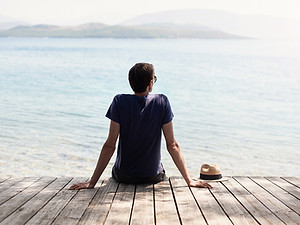Destinations

Photography: Whyframeshot @ Adobe Stock
Bhutan
Location: South Asia, landlocked between China (Tibet Autonomous Region) and India
Coordinates: 27.5142° N, 90.4336° E
Main gateway: Paro International Airport (PBH)
Direct flights from: India, Nepal, Thailand, Bangladesh, Singapore
Best for: Cultural immersion, mountain trekking, nature and wellness, spiritual retreats
Ideal time to go: March–May (Spring) and September–November (Autumn) for clear skies and festivals
Languages spoken: Dzongkha (official), English widely used, various regional dialects
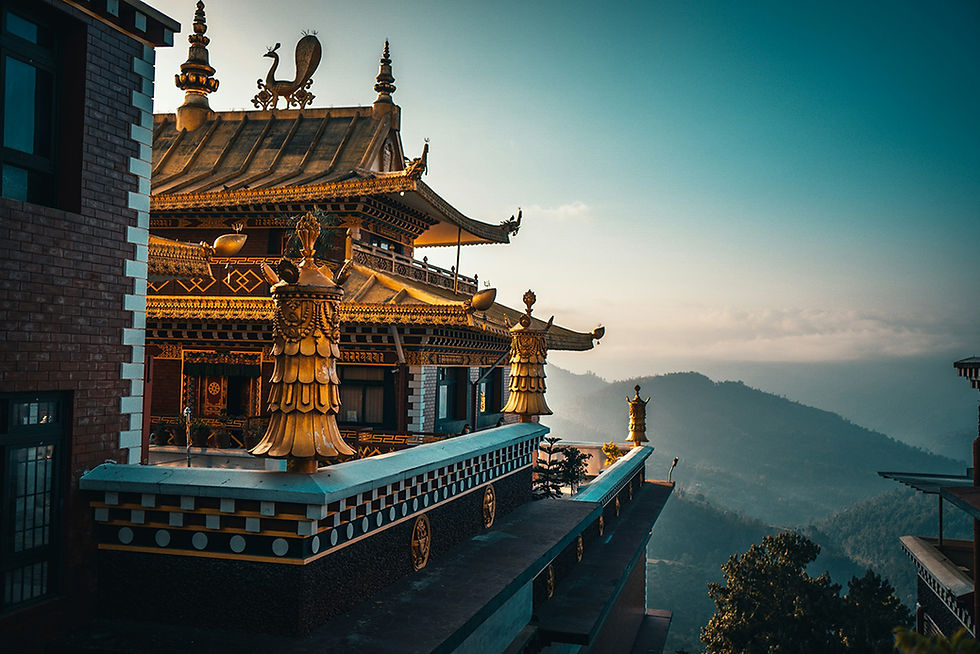
A Buddhist temple set within the Himalayas, Bhutan. Photography: Raimond Klavins @ Unsplash.
Where solitude meets soul
By Emily Clarke
There are some places that don’t just make an impression, they have the power to alter your perceptions of time and place, and Bhutan is one of them. Tucked into the folds of the Eastern Himalayas, this small, landlocked kingdom isn’t just defined by its geography, but by a philosophy that makes it unlike anywhere else on Earth. It’s not just what you see, but how you feel when you’re there – still, present, and undeniably alive.
Bhutan encourages you to listen more deeply – to others, to nature, and to yourself. For solo travellers, it’s an ideal place to recalibrate. There’s no pressure to do anything, only the gentle invitation to ‘be’ – quietly, fully, and in tune with a place that seems to understand why you came in the first place.
A kingdom guided by happiness
Bhutan is the only country in the world to measure its progress through Gross National Happiness (GNH), a framework that prioritises wellbeing over wealth. You feel it in the preserved forested landscapes, in the reverence for tradition, and in the gentle pace of life that favours depth over speed.
Founded on Vajrayana Buddhist principles, Bhutan’s deep spirituality flows through every element of daily life. Prayer flags flutter in mountain breezes, crimson-robed monks chant in remote monasteries, and ancient festivals bring valleys to life with sacred dance and storytelling.
Bhutan is perfect for travellers who don’t need crowds to feel connected. Solo travel here isn’t lonely, it’s liberating. You move quietly through mountain passes and peaceful valleys, accompanied by the rhythm of your own thoughts. Every trail, dzong (monastic fortress), and prayer wheel invites introspection.
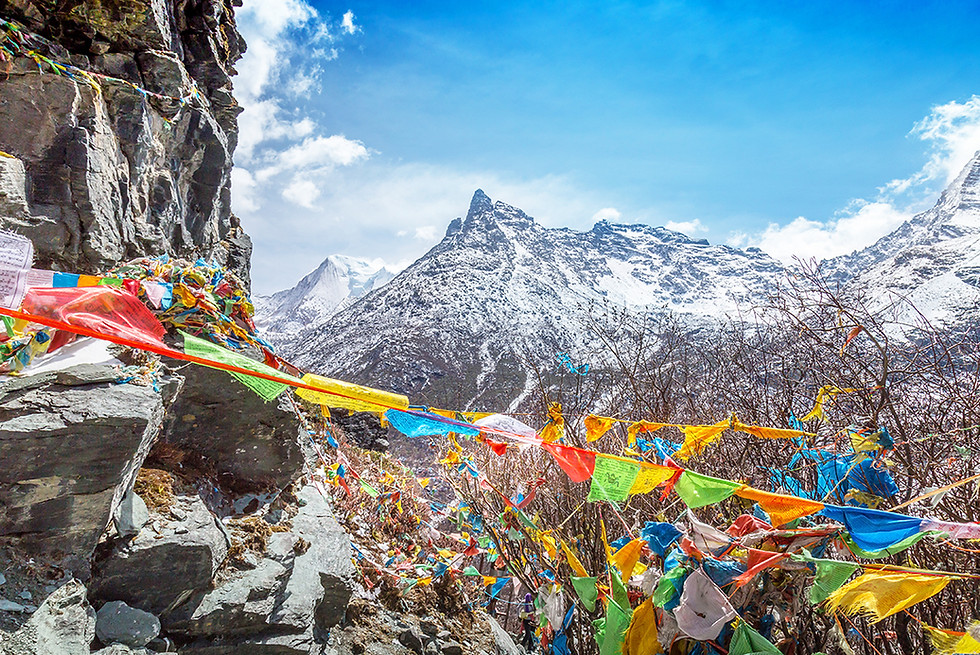
Buddhist prayer flags, Bhutan. Photography: Whyframeshot @ Adobe Stock.
Some recommended highlights to consider for your journey
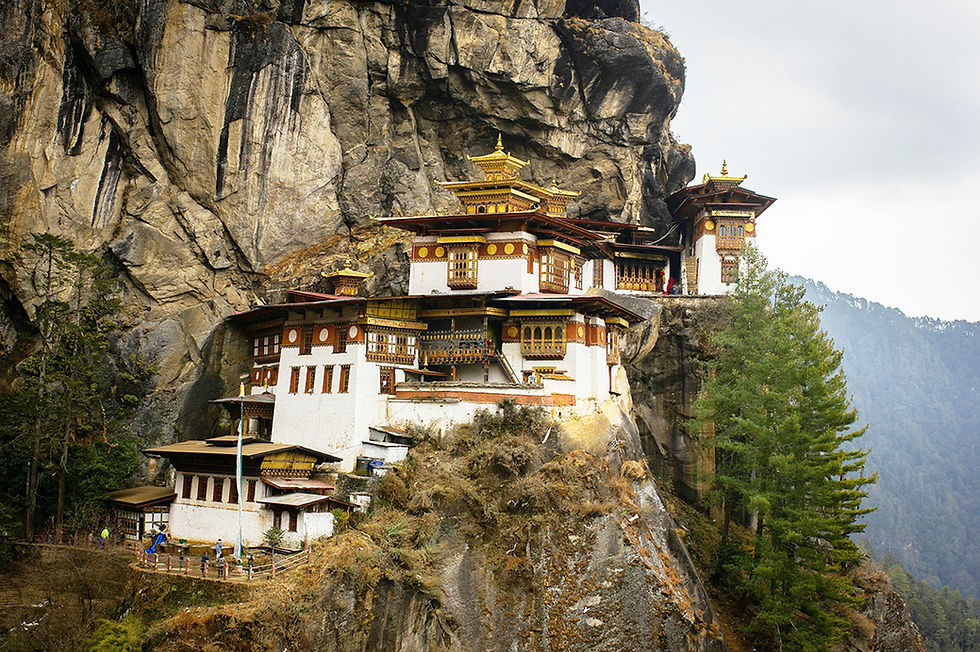
Paro Taktsang, Bhutan. Photography: Gaurav Bagdi @ Unsplash.
Paro Taktsang (Tiger’s Nest Monastery): A pilgrimage and rite of passage. Clinging to a cliffside 900m above the Paro Valley, the hike to this sacred site is physically and emotionally moving.

Punakha Dzong, Bhutan. Photography: Nihar Modi @ Unsplash
Punakha Dzong: Often described as one of Bhutan’s most beautiful, this riverside fortress blends nature, history, and spirituality into one unforgettable encounter.
Thimphu: Bhutan’s capital may have no traffic lights, but it has a heartbeat. Explore its traditional markets, textile museums, and tea houses, or just wander with no agenda at all.
Bumthang and Haa Valley: For those who seek even more solitude, Bhutan’s lesser-known regions offer walking trails, traditional guesthouses, and the kind of quiet that stays with you long after you’ve left.
An important note for your planning
Since the initiation of tourism in 1974, the Royal Government of Bhutan has pursued a cautious and visionary approach to the development of the country’s tourism industry. Bhutan’s tourism policy of ‘High Value, Low Impact’ has been instrumental in preserving its rich cultural heritage over the years. Sustainability has been the cornerstone of Bhutan’s tourism industry, emphasising environmentally friendly practices, social and cultural acceptance, and economic viability. All travellers pay a Sustainable Development Fee (SDF) – a daily fee that all tourists (except for nationals of India, Bangladesh, and the Maldives) must pay to visit the country. The SDF is used to fund sustainable development initiatives in Bhutan, including infrastructure, environmental conservation, and cultural preservation. The fee is paid in advance as part of the visa or permit application process. (Source: www.visitbhutan.com)
The Bhutan Spirit Sanctuary
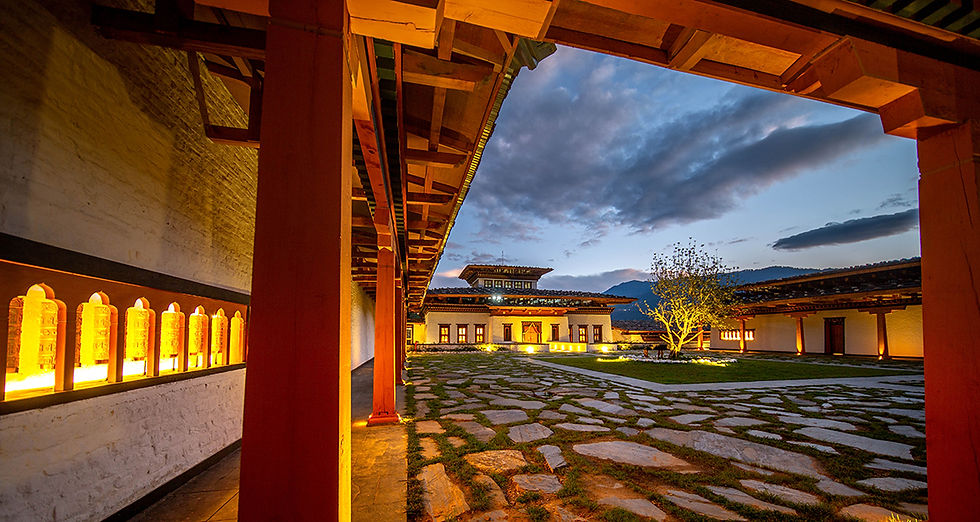
The Bhutan Spirit Sanctuary courtyard by night. Photography: Bhutan Spirit Sanctuary.
Bhutan is renowned for its breathtaking landscapes and spiritual serenity, and at the Bhutan Spirit Sanctuary, you can complement your journey with a day of deep relaxation and rejuvenation. Rooted in Traditional Bhutanese Medicine, this holistic retreat is designed to restore balance to the mind, body, and spirit.
In Bhutan, healing often arrives not with fanfare, but through simplicity – crisp mountain air, fragrant herbs, and the quiet steam rising from a traditional hot stone bath. At the Bhutan Spirit Sanctuary, this centuries-old ritual is honoured with care, offering guests a profound wellness experience rooted in Bhutan's ancient traditions. Nestled in the Neyphu Valley, the Sanctuary is an oasis of peace. From the moment you step through its golden gate, you are welcomed into an atmosphere of stillness and renewal.
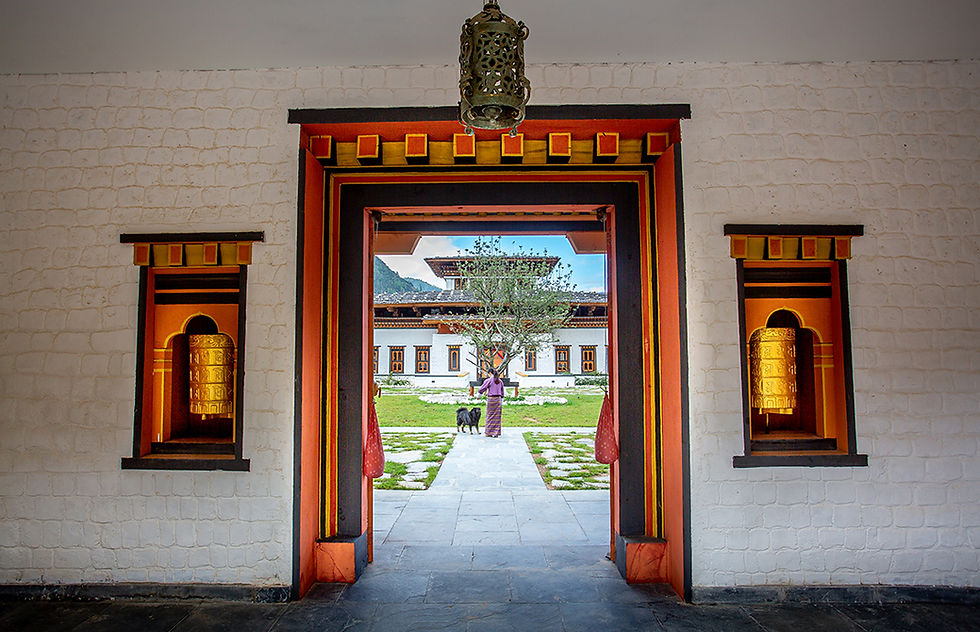
The entrance to the Bhutan Spirit Sanctuary. Photography: Bhutan Spirit Sanctuary.
Known as dotsho, the Bhutanese hot stone bath is more than just a treatment, it's a therapeutic ritual deeply embedded in gSo-ba Rig-pa, Bhutan's traditional medicine system, with origins in Tibetan and Ayurvedic healing practices. Stones selected from riverbeds are heated over an open fire until glowing red, then placed into wooden tubs infused with local menchu (medicinal plants). As the stones release their minerals, the water becomes a powerful source of relief for sore muscles, fatigue, and stress.
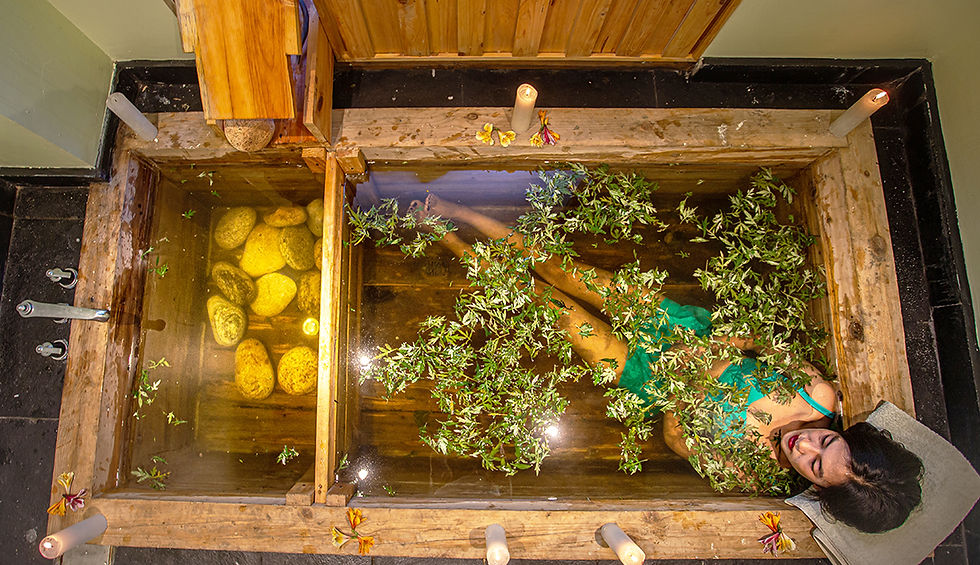
The hot stone bath at the Bhutan Spirit Sanctuary. Photography: Bhutan Spirit Sanctuary.
“The bath works on the physical and subtle body,” Dr Kelsang Dorjigkss, the inhouse Traditional Bhutanese Medicine Doctor at the Bhutan Spirit Sanctuary told The Solo Traveller. “The fire element transforms the water into something nurturing, while the combination of heat and herbs restores balance to the mind and body.”
Set against panoramic Himalayan views, the Sanctuary's hot stone baths offer more than relaxation, they create space for presence. In a fast-paced world, this slow, intentional practice invites stillness, grounding, and a deeper sense of connection. Whether after a forest hike or simply as a ritual of self-care, the Bhutan Spirit Sanctuary welcomes guests to experience this rare tradition in the way it was always meant to be unhurried, elemental, and healing.

The yoga room at the Bhutan Spirit Sanctuary. Photography: Bhutan Spirit Sanctuary.
The Bhutan Spirit Sanctuary is the first and only 5-star wellness-inclusive luxury resort in Bhutan. Every stay includes all meals, with a 4-course set lunch and a 6-course set dinner, alongside an à la carte breakfast. Rates include access to the expertise of Traditional Bhutanese Medicine Doctors, one wellness treatment per paid night, and complimentary use of our wellness services and facilities. Yoga classes, meditation sessions, and a curated selection of inhouse activities further enhance your stay, promising an experience that nourishes your body, mind, and spirit.
Emily Clarke is a passionate solo traveller and The Solo Traveller’s Tourism Collaborations Lead.
You might also enjoy …

Health and Wellbeing




